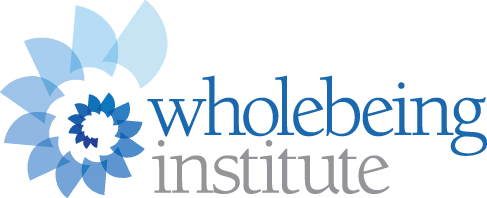When I applaud the MOMs, POPs and PIPs in our life, I’m not offering homage to the importance of mothers, fathers, and little ones, though I do applaud them. I am referring to the strategy of inducing pockets of positivity (POPs) and moments of meaning and purpose (MOMs) in order to increase our sense of well-being and build resources that are protective factors for our mental, emotional, and physical health, as individuals and as a society. These resources can be psychological, intellectual, physical, and/or social (PIPS).
POPs (Pockets of Positivity)
Research psychologist Barbara Fredrickson has been investigating the benefits of positive emotions for the last 20 years. She maintains that positive emotions have an adaptive function and therefore have survival value. Although not as readily obvious as the survival value of negative emotions (as when you fight, freeze, or flee when faced with a predator), positive emotions help build resources that enable us to survive and thrive.
Negative emotions produce specific, narrow actions and also narrow our thinking. There’s one option—run, attack, or freeze up. On the other hand, positive emotions broaden our cognitions, allowing us to see the big picture and many possible actions. Fredrickson calls this “pathways thinking,” and it engenders broadminded coping abilities. Having the ability to problem solve and figure out the best strategy, or even the way you want to act, helps us to adjust in a healthy way, survive, and even flourish.
PIPS (Psychological, Intellectual, Physical, and Social Resources)
According to researcher Jacolyn Norrish and colleagues, positive emotions create PIPs. Experiencing curiosity, for example, facilitates exploration and investigation, and enhances our knowledge and understanding of ourselves and others. These are psychological, intellectual, and social resources, which, in turn, can lead to self-confidence and resilience, a psychological resource. Flexible thinking and self-understanding can promote better self-regulation (an intellectual, psychological, and social-emotional resource), and better self-regulation also contributes to better social relations.
Too often, we use emotional coping or avoidance coping to deal with the stressors of life. Sonya Lyubomirsky and colleagues suggest that being in a state of positive emotion—for example, hope—allows us to prepare for future challenges by setting new goals, thus expanding our potential and our future sense of self efficacy and self-confidence. This is a psychological resource of ego resilience and produces broadminded coping, which supports us to navigate through obstacles by thinking through all possibilities and outcomes.
Positive psychology research has also focused on how positive emotions contribute to our physical health. Fredrickson, in a seminal piece of research, showed that positive emotions have an “undoing effect” on cardiovascular reactivity. When subjects who were stressed—which increased their heart rate—experienced amusement or contentment, their heart rate returned to normal faster than if they had experienced sadness or a neutral emotion. The implication for this research is that positive emotions can be used as a way to bounce back from the effects of negative emotions.
Negative emotions (depression, anxiety, and the “hostility factor” in the Type A personality) have long been acknowledged as risk factors associated with cardiovascular disease. A review study by Nancy L. Sin suggests that positive well-being (positive emotion, positive affect, optimism, and life satisfaction) can serve as a protective role in cardiovascular disease. In a British study included in the review, optimism and vitality (life energy) were associated with a 20 to 30 percent decreased risk of coronary heart disease (CHD), and reported life satisfaction was also associated with decreased CHD risk, especially angina. In the United States, results were similar: Optimism predicted decreased incidence of heart failure, and purpose in life and emotional vitality were associated with decreased stroke risk. A Canadian survey found that positive affect was protective against 10-year incident CHD, even after controlling for variables such as depression, anxiety, hostility, and other biological and behavioral risk factors. Interestingly, in another study, optimism but not gratitude decreased the risk of re-hospitalization and increased health behaviors.
MOMs (Moments of Meaning and Purpose)
Social resources are bonds of connectedness that we form with others. These create momentary happiness and also build a longer-lasting emotional support network. Emotionally attached families, friends, and communities thrive and survive utilizing these social resources. Flourishing occurs when one can “tend and befriend” or be the recipient of this meaningful gesture. We can soothe our distress, thereby regulating our emotions, by having a secure base (our family, our community, etc.), and we can broaden our ability to meet challenges through expanded thinking and perception of more divergent pathways to a goal.
Positive emotions—like love, for instance—increase oxytocin, often called the love hormone, which makes us feel closer to others and also physiologically regulates our cardiovascular system, the heart. In one of my favorite studies by Fredrickson, “Open Hearts Build Lives,” Lovingkindness Meditation increased momentary positive emotions and generated more positive emotions spontaneously over time. Lovingkindness is like a megavitamin for life. It increases love, which in turn increases oxytocin, which benefits the heart both literally and figuratively. (Oxytocin, released through love, suppresses inflammation, and higher levels are linked to reduced hypertension.) Participants in Frederickson’s study reported less depression, fewer headaches, less congestion, and more satisfaction with life.
Lovingkindness meditation helps us engage in relaxed breathing, triggering the “rest and digest” system, which replenishes our nervous system. It also sets an intention to love and the purpose to care for all. The meaning and purpose component of lovingkindness increases cardiac vagal tone (a heart health marker), which in turn increases the intensity of positive emotions when with others and allows one to connect with something (or someone) larger than oneself. Positive emotions combined with purpose create an “upward spiral dynamic” of emotional, psychological, and physical health and well-being. It seems that when we call upon this resource, we are immersing ourselves in both MOMs and POPs!
Nourishing Vitality and Heart Health
MOMs and POPs create a sense of vitality in our life. Vitality is physical energy (I feel alive and vigorous!). It is an activated positive emotion (I am enthusiastic, interested, and full of zest!). It is also a positive mindset or intention (I’m going to live my life to the fullest with transcendent mindfulness and optimism!). Vitality is the opposite of vital exhaustion, which Samuel Melamed describes as “fatigue, emotional exhaustion and cognitive weariness.” In the beginning of vital exhaustion, we experience anxiety in trying to cope; over time, we experience depression and physical illness, especially inflammation, immune disorders, allergies, viral infections, and often cardiovascular events.
Given that February is American Heart Health Month, it seems relevant to suggest that we can strategically induce MOMs and POPs so that we can nourish our heart. But how can we induce vitality? Some say physical exertion and movement give us vitality, while others say psychological wholeness (reducing intrapersonal and interpersonal conflicts). Richard M. Ryan and Edward Deci postulate that one needs to be autonomous, competent, and socially connected in order to feel vital.
An interesting study led by Ashley Martin-Cuellar found that therapists who used mindfulness were more likely to report feeling vitality. Mindfulness improved a sense of psychological well-being (purpose in life, autonomy, personal growth, environmental mastery, positive relationships and self-acceptance), which in turn improved vitality. However, when mindfulness produced psychological well-being and compassion satisfaction (vs. compassion fatigue), vitality increased even more.
It seems that mindfulness is a way to achieve psychological well-being, and this becomes a lens through which one can perceive compassion satisfaction and thus vitality in our work/life (an antidote for compassion fatigue and vital exhaustion). We can strategically induce vitality by actively engaging in that which invigorates us. Finding our unique MOMs and POPs may help us do just that!
Lorraine offers a webinar titled “Inducing Vitality: Strategies from the Field of Positive Psychology,” next Tuesday, February 23, at 12:00 pm ET, as part of WBI’s series of Online Positive Psychology Hours presented with the JCC Manhattan. Register here.

Lorraine Gahles-Kildow, PhD
Lorraine Gahles-Kildow, PhD, a licensed psychologist in the state of New Jersey, has been in private practice for 22 years. She specializes in using Cognitive Behavioral Therapy with adults, teenagers, and children to address issues related to trauma, PTSD, compassion fatigue, burnout, depression, anxiety, OCD, phobias, and more. She received her MPhil and PhD from the City University of New York and her M.A. from Long Island University. She has taught psychology courses for over 30 years, and spent 18 years training Montessori teachers on child development and psychological principles at the Princeton Center for Teacher Education in Princeton, New Jersey. She writes and presents on utilizing positive psychology interventions for caregivers, healthcare professionals, and self-care.



Great article Lorraine. Good to see you are sharing your talents. I hope your ”grown” children are thriving.
Marsha Stencel
Thank you Marsha! And thank you for allowing me an opportunity to share my talents at the Princeton Center for Teacher Education under your tutelage! My grown children are doing well! Best wishes to you.